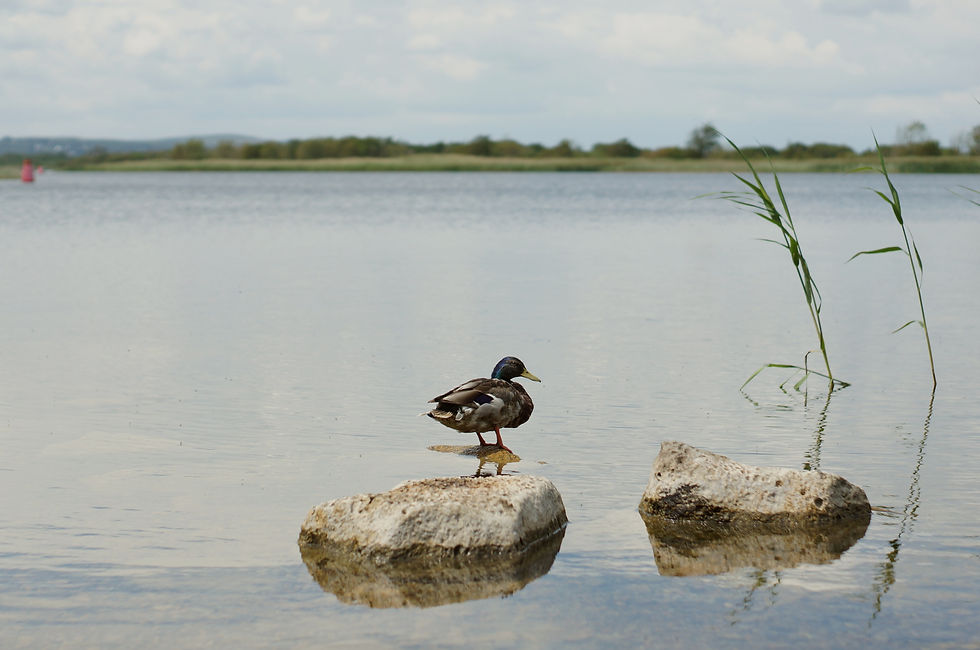Why a Greener Planet Is Better for Your Health
- Ecofriendly YYC

- Jul 31, 2018
- 4 min read

It goes without saying that human activity doesn’t occur in isolation from the rest of the world. Indeed, conservation efforts are quick to point out habitat degradation and the introduction of invasive species by humans as main causes of the decline of wildlife and plants, and rightly so. Human activity has caused a massive decline in biodiversity worldwide, and in extreme cases, has already caused the extinction of species once considered ubiquitous. Take for example the passenger pigeon. Once the most abundant bird in all of North America, the passenger pigeon population sharply nosedived after the arrival of Europeans, until the last known passenger pigeon died on September 1st, 1914.
So how does climate change affect our health? How does industrialization affect our health? Well, it’s complicated.
Air Pollution

The World Health Organization (WHO) makes a distinction between ambient and household air pollution. The term ambient air pollution, in short, refers to outdoor air pollution. Together, the two forms of pollution combined are responsible for 7 million premature deaths every year. Yes, 7 million deaths. Air pollution can increase deaths from respiratory diseases, heart attacks, and strokes. What’s worse is that with the growing trend towards urbanization, air pollution is likely to affect more people since 80% of people in urban areas breathe in air that exceeds the WHO recommended guideline limit for air pollution. As well, low and middle-income countries suffer the most from air pollution, with the poorer people within a country being more likely to suffer the effects of air pollution.
According to the WHO, some of the worst air pollutants are ozone, sulfur dioxide, nitrogen dioxide, and particulate matter (PM). According to the Environmental Protection Agency (EPA), PM is a mixture of solid and liquid droplets that are in the air, such as smoke, dust, and soot. These particles get dangerous when they become smaller than 10 micrometers in diameter, as they are inhalable and can even enter the bloodstream. They can cause a wide variety of problems, such as worsened asthma, irregular heartbeat, heart attacks, and even death in people with heart or lung disease. Ozone can cause respiratory issues as well. However, it is usually a secondary pollutant, meaning it is not produced directly. Often, it gets formed when volatile organic compounds such as methane or carbon monoxide combine with a nitrogen oxide (NOx) in the presence of sunlight. These compounds are usually emitted from vehicle exhaust, the burning of fossil fuels, and industrial facilities.
Surely this would mean that household air pollution is less severe, right? Actually, it doesn’t. According to the WHO, 3.8 million people die every year from household air pollution, mainly in low and middle-income countries. Often times, the pollutants made in households come from one of the most benign sources: making a fire for a stove or open hearth. In addition to aforementioned pollutants, households can also be affected by radon. Radon is a radioactive gas, and it is also the leading cause of lung cancer in non-smokers. Why? According to the WHO, radon can be emitted from certain types of soil or rock. When houses are built upon these grounds, the radon will become trapped in the house, often in the basement. A University of Calgary study found that one out of eight homes in southern Alberta had levels of radon above the Health Canada guidelines.
Disease
What do Lyme disease, West Nile virus, and malaria have in common? They are all vector-borne diseases which have had their range expanded due to rising temperatures.
Uh, what? Let’s back up a second. A vector is an organism that can transmit diseases but isn’t actually the disease-causing agent. Good examples of vectors include mosquitoes and ticks. The mosquito genus Anopheles is especially of concern since it contains many species which can transmit malaria, some of which prefer cooler climates. However, the major concern is that the overall trend towards global warming will create more habitat which favours mosquitoes that are currently in Sub-Saharan Africa:
Anopheles gambiae is regarded as the most efficient transmitter of malaria according to Wikipedia. An expansion of its habitat will definitely be a challenge in controlling malaria. The West Nile virus is also a mosquito-borne disease that has had its range expanded in part because of climate change. Climate change in the US has made precipitation patterns more variant. Rather than steady periods of precipitation, periods of drought and heavy rainfall are becoming more common, which makes it more suitable for mosquitoes according to the Natural Resources Defense Council (NRDC). So even though it only arrived in the US in 1999, West Nile virus has already become the most common mosquito-borne illness in the US. West Nile arrived in Canada in 2002 and has had reported cases every year since then according to the Government of Canada, making it very likely that the disease is here to stay.
So what about Lyme disease? According to Wikipedia, climate change has allowed the range of Lyme disease-carrying ticks to expand dramatically in Canada. While initially only Ontario was previously affected, British Columbia, Alberta, Saskatchewan, Quebec, Nova Scotia, New Brunswick, and Manitoba have also reported cases of the disease. The following figure from the Government of Canada website shows how the number of cases reported in Canada has increased over time:
There is also evidence to suggest that habitat fragmentation of forests is also partly responsible for the rise of Lyme disease. The reason? According to ScienceDaily, the white-footed mouse, which is a carrier for the bacteria that causes Lyme disease, fares better in fragmented habitats due to the reduced presence of predators. This increases their population, and also increases the frequency that ticks bite an infected mouse. Thus, the risk of contracting Lyme disease increases.
So what can you do reduce these risks, beyond carrying out a healthy lifestyle? Well, the answer lies in what needs to be done to reduce the effects of climate change: lower fossil fuel emissions and switch to renewable, clean power sources. This is definitely a large effort that will need a nationwide collaboration, but the fact of the matter is that it will need to be done at some point, and sooner is better. As an individual, the most important and meaningful thing you can do is to make your voice heard. This could include attending protests against pipeline development, promoting renewable energy development, or hitting the politicians where it really hurts: at the polls. During the election season, review the environmental policy of each party and vote for a party that actually cares about Canada’s future, not just the unsustainable path it’s on at the moment.







Comments